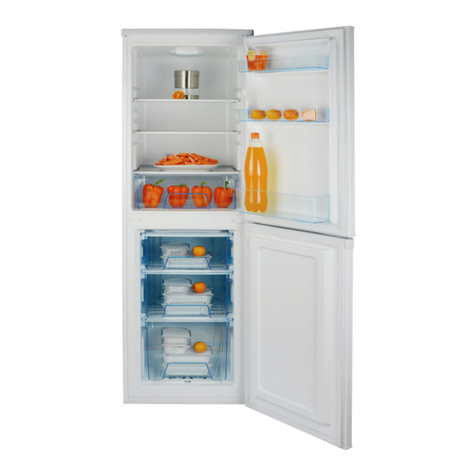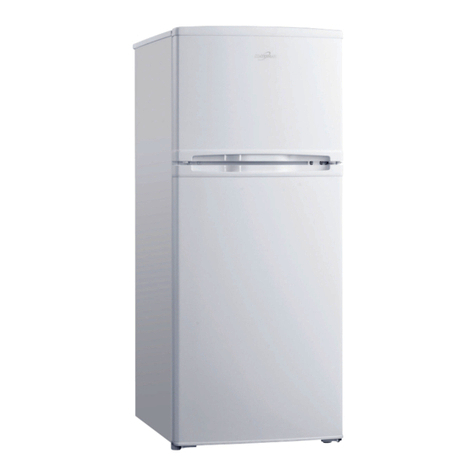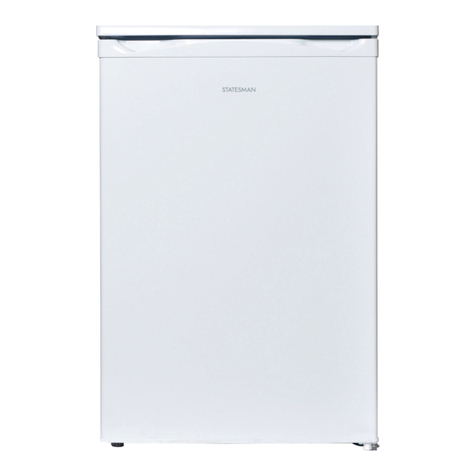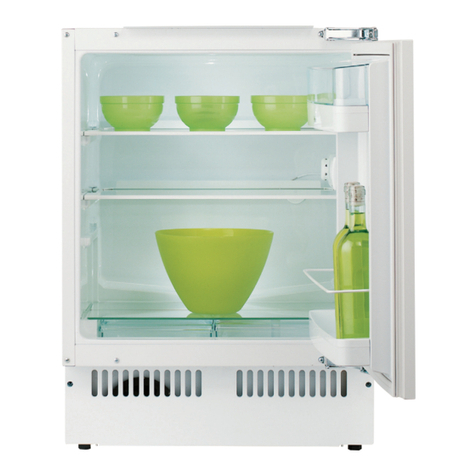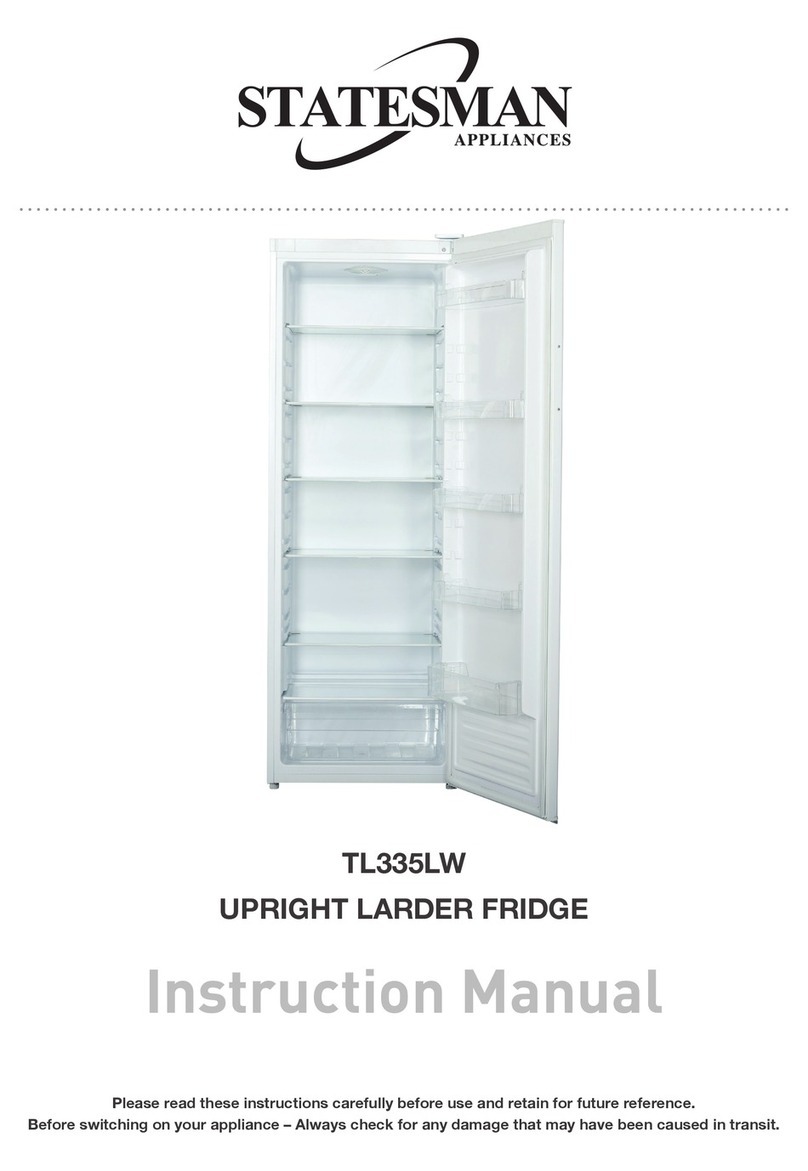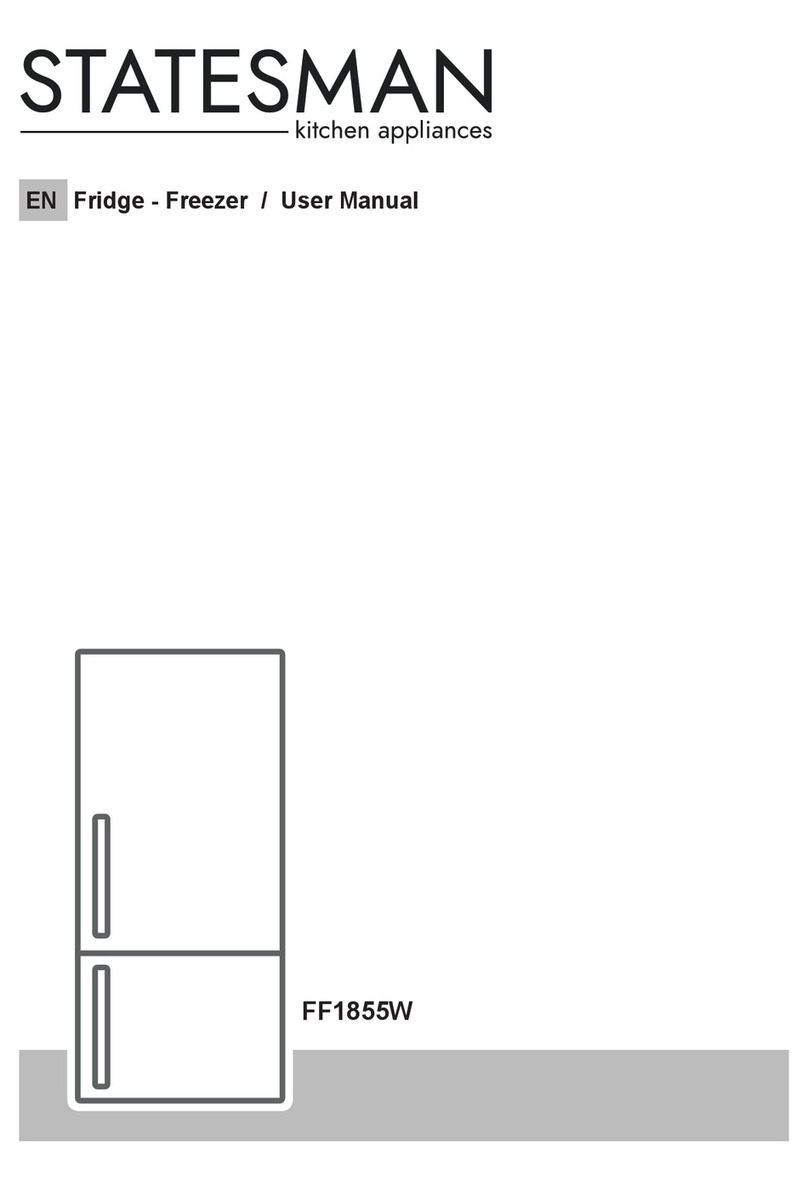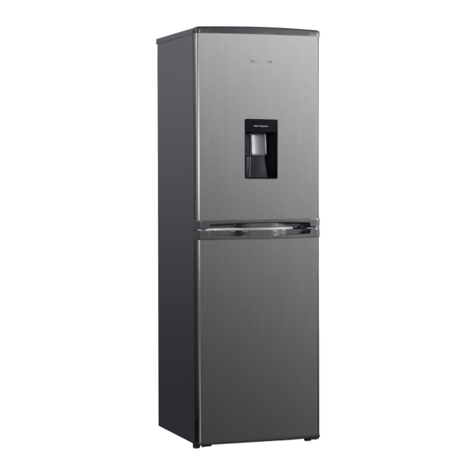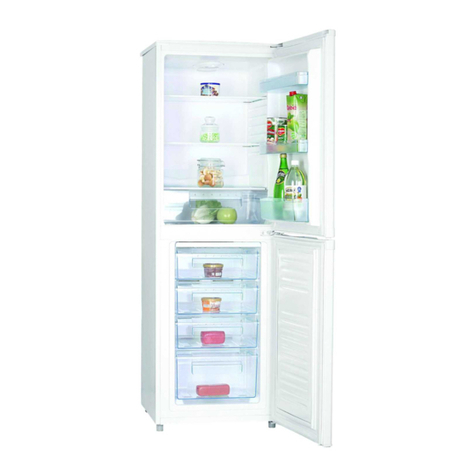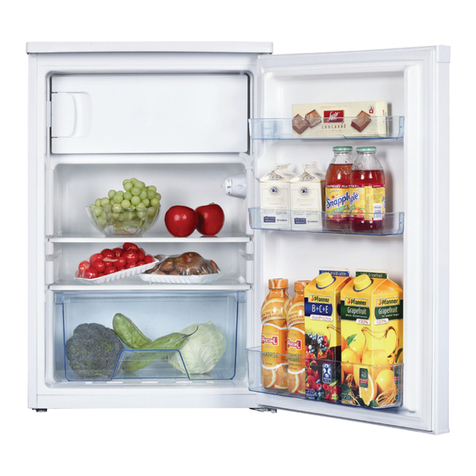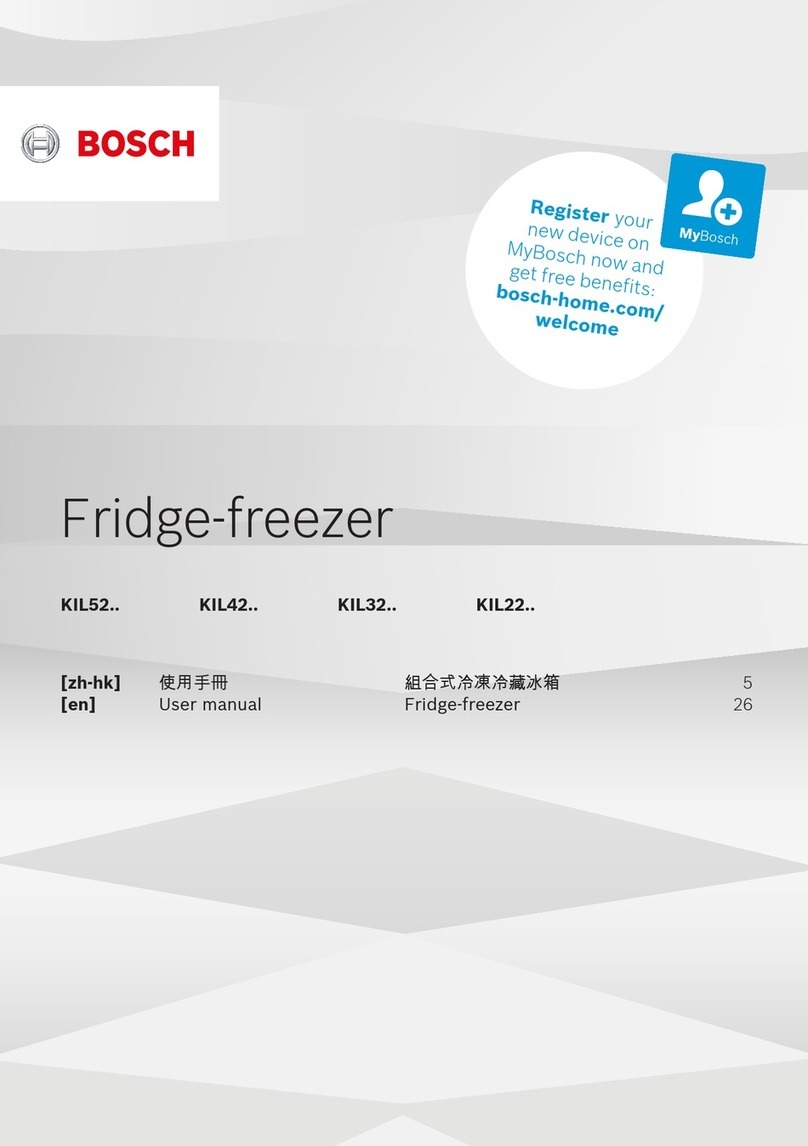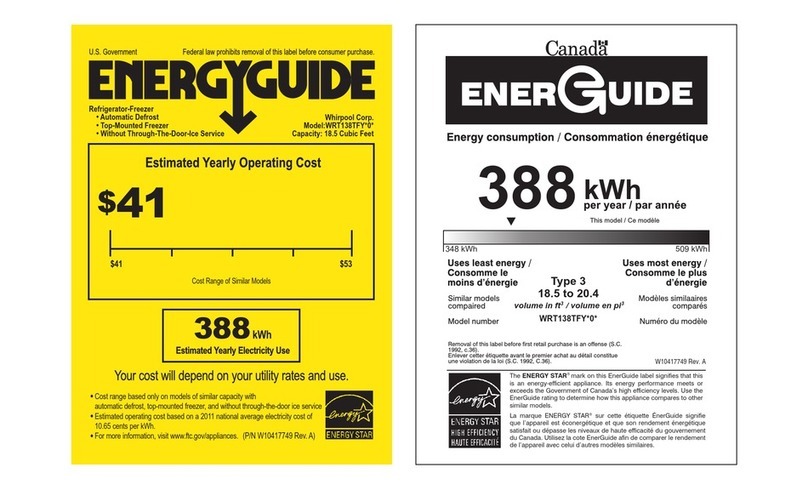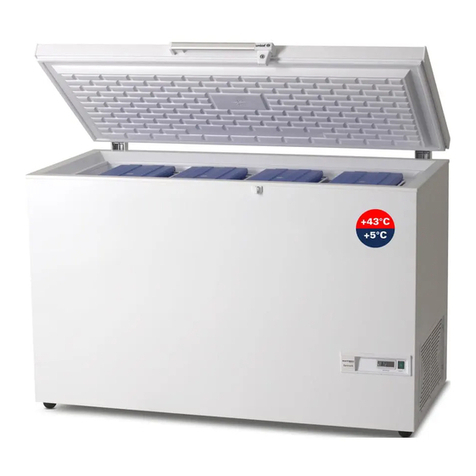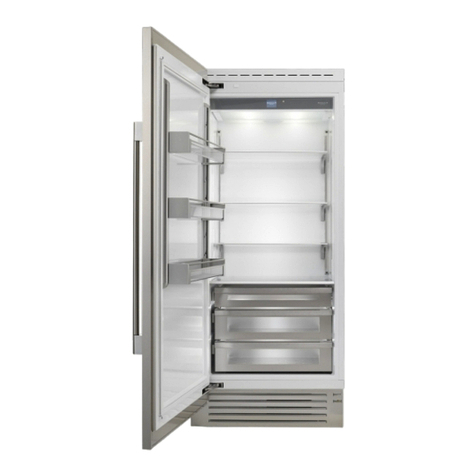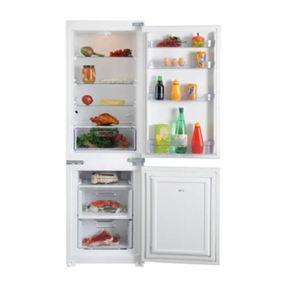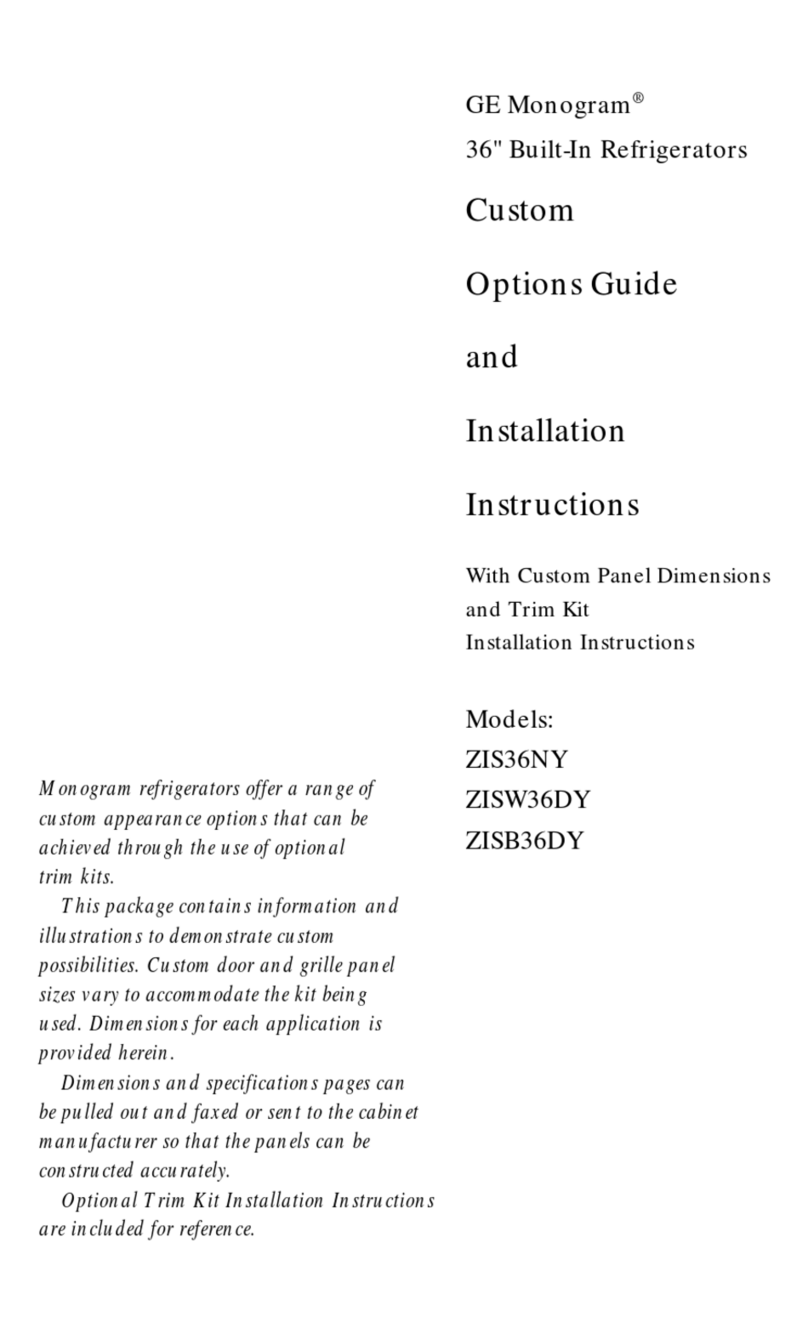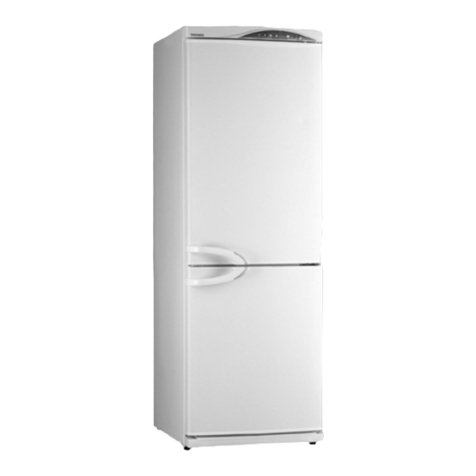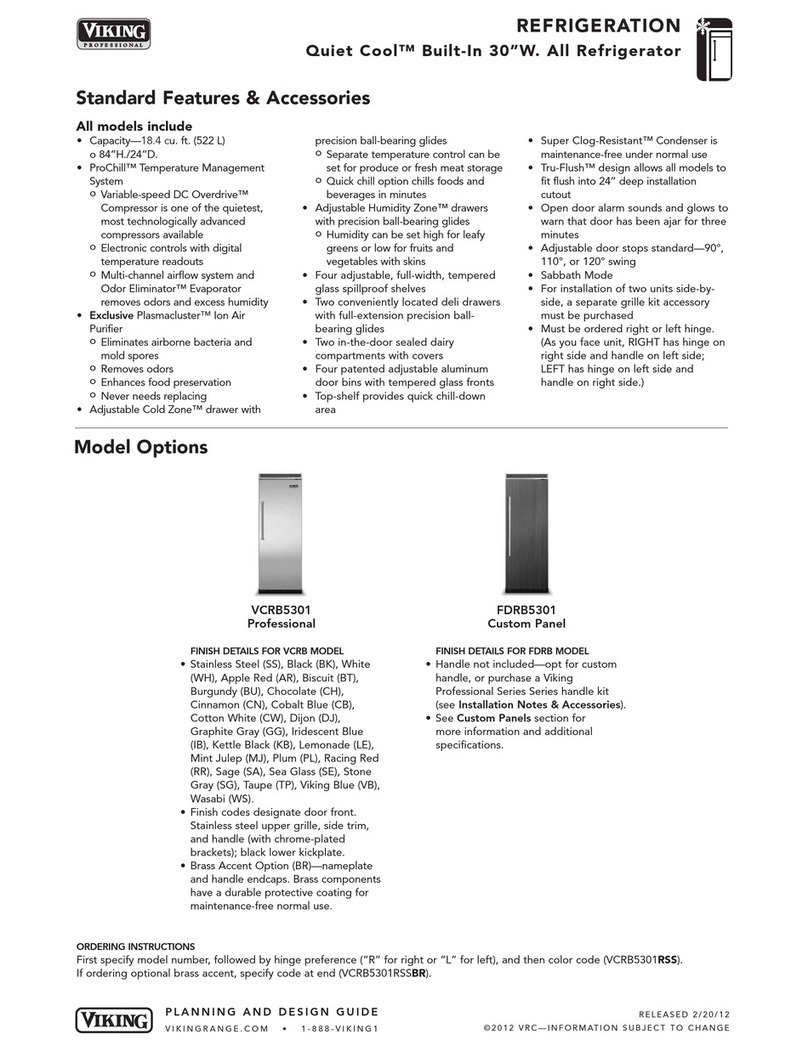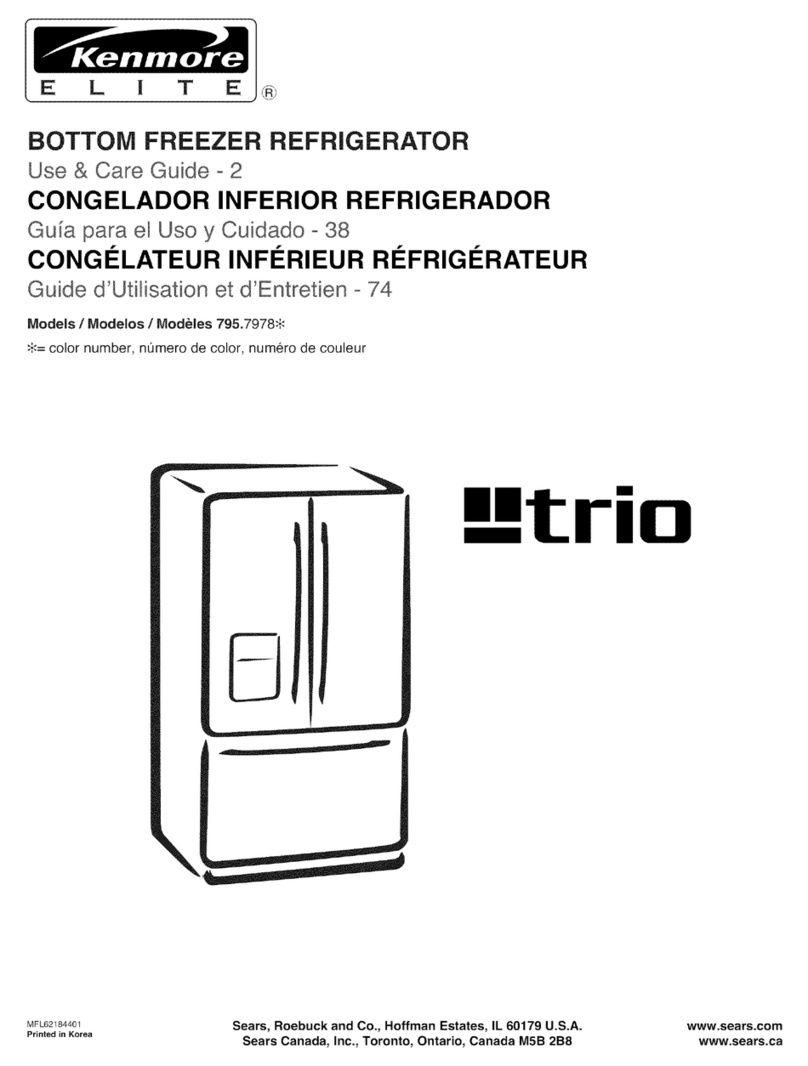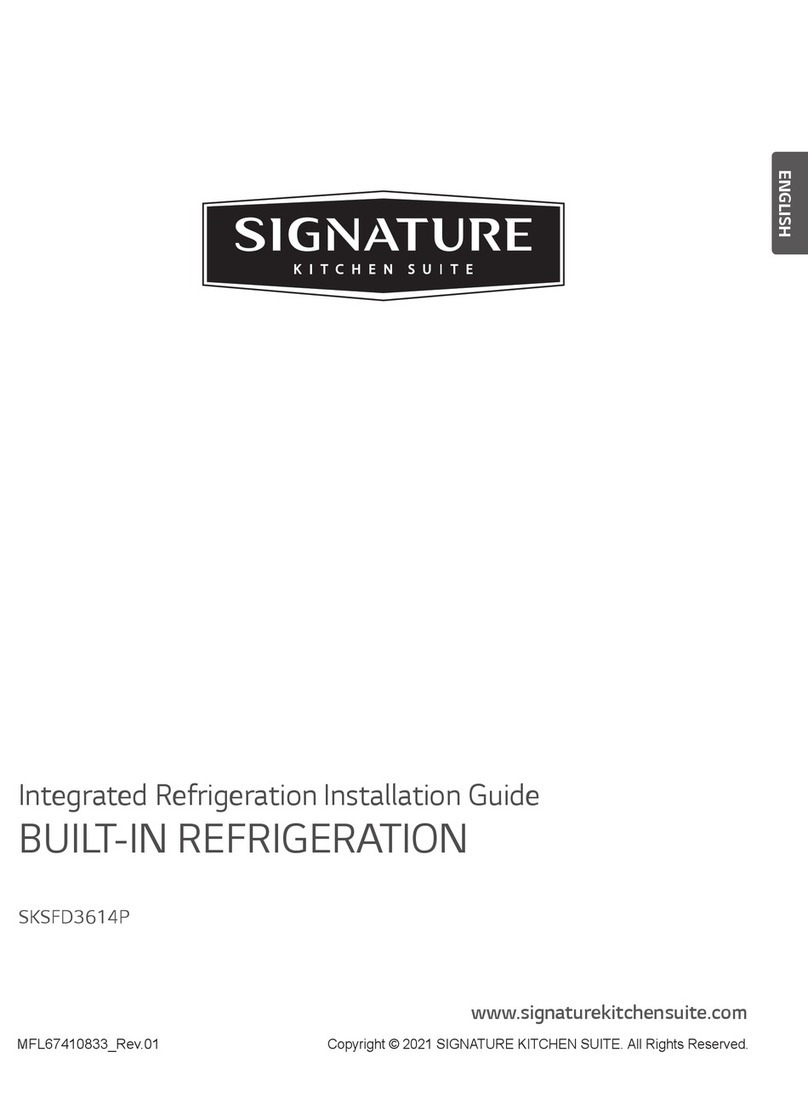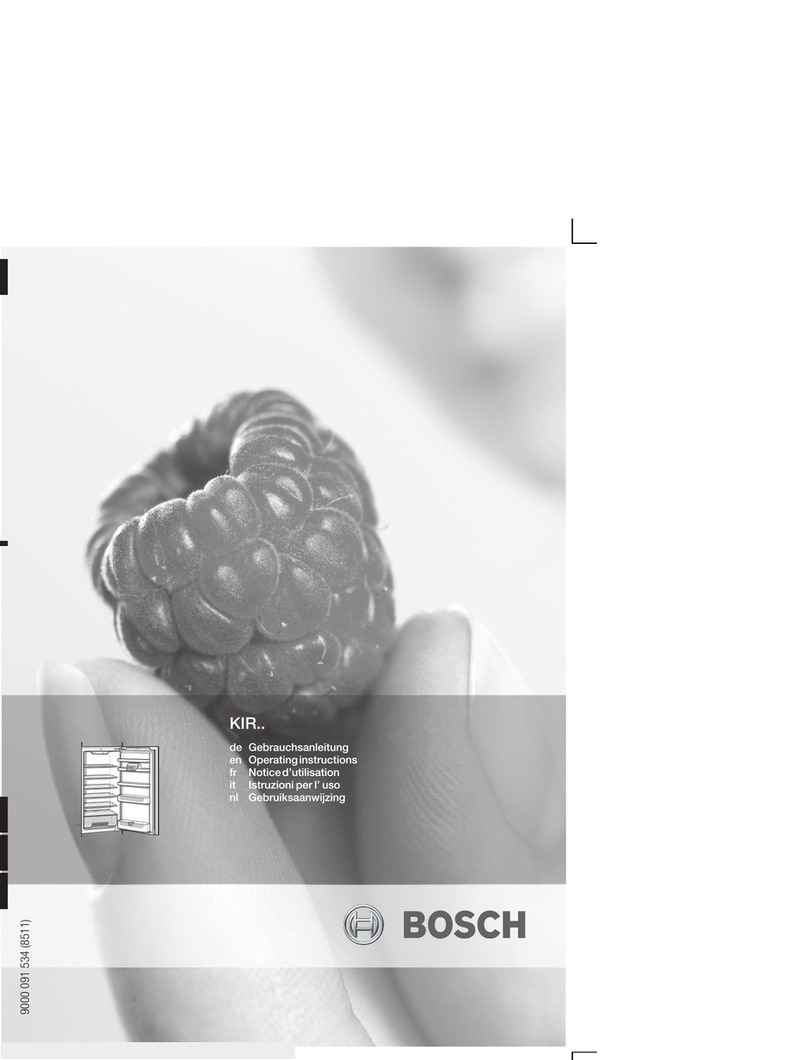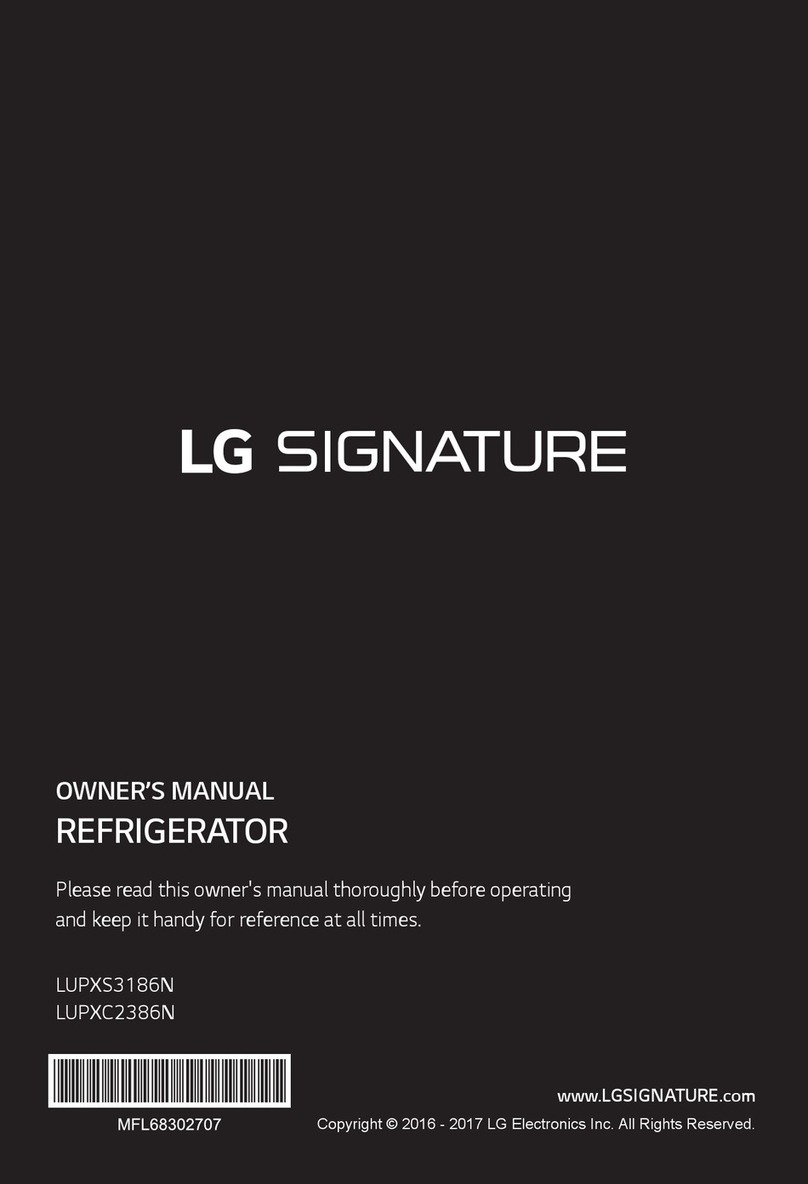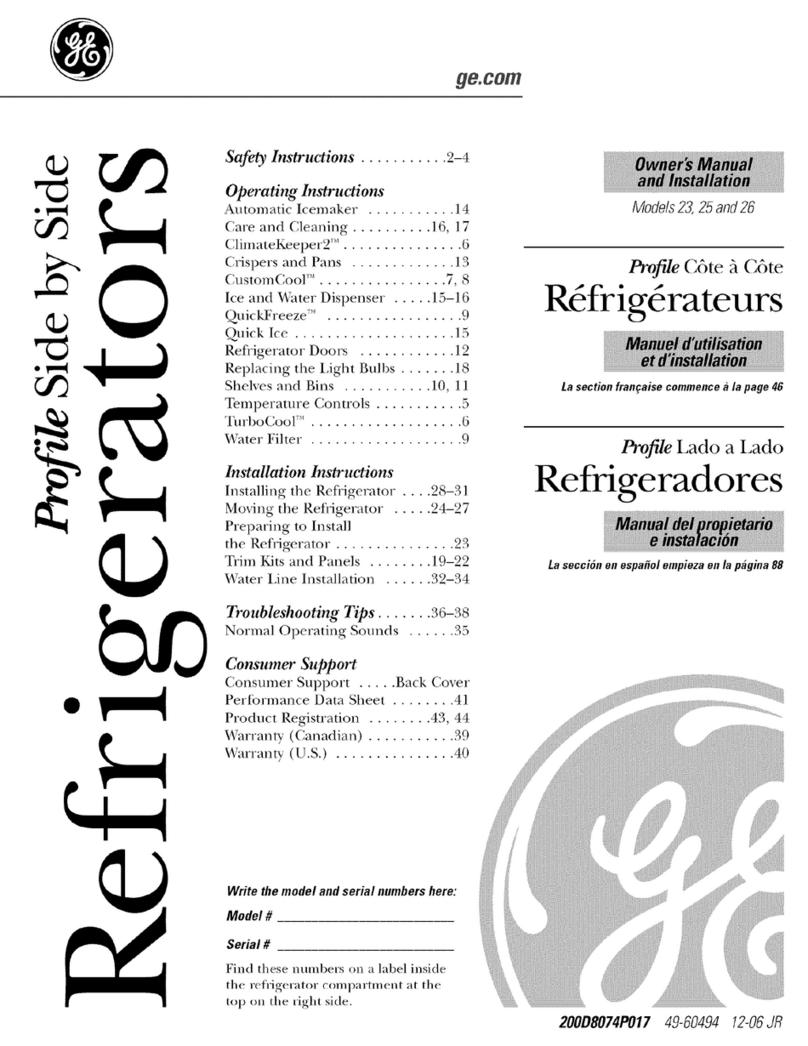
14
tnegr
eted
Overall cleaning
• Dusts behind the refrigerator and on the ground should be regularly cleaned to improve the
cooling eect and save energy.
• Check the door gasket regularly to make sure there is no debris. Clean the door gasket with a
soft cloth dampened with soapy water or diluted detergent.
• The interior of the refrigerator should be cleaned regularly to avoid odour.
• Please turn o the power before cleaning the interior and remove all foods, drinks, shelves,
drawers, etc.
• Use a soft cloth or sponge to clean the inside of the refrigerator, with two tablespoons of baking
soda and a quart of warm water. Then rinse with water and wipe clean. After cleaning, open the
door and let it dry naturally before turning on the power.
• For areas that are dicult to clean in the refrigerator (such as narrow gaps or corners), it is
recommended to wipe them regularly with a soft rag, soft brush, etc. to ensure no contaminants
or bacteria accumulates in these areas.
• Do not use soap, detergent, scrub powder, spray cleaner, etc., as these may cause odours in the
interior of the refrigerator or contaminate food.
• Clean the bottle frame, shelves and drawers with a soft cloth dampened with soapy water or
diluted detergent. Dry with a soft cloth or dry naturally.
• Wipe the outer surface of the refrigerator with a soft cloth dampened with soapy water,
detergent, etc., and then wipe dry.
• Do not use hard brushes, clean steel balls, wire brushes, abrasives (such
as toothpastes), organic solvents (such as alcohol, acetone, banana oil,
etc.), boiling water, acid or alkaline items, which may damage the fridge
surface and interior. Boiling water and organic solvents such as benzene
may deform or damage plastic parts.
• Do not rinse directly with water or other liquids during cleaning to avoid
short circuits and not aect electrical insulation after immersion.
WARNING! Please unplug the refrigerator for defrost and cleaning.
Defrosting
• Power o the refrigerator.
• Remove the food from the refrigerator and store it properly to prevent food from melting.
• Clear the drain pipe (use soft materials to prevent damage to the liner) and prepare the water
containers for defrosting. (pay attention when cleaning the compressor compartment water
draining tray to avoid overow to the ground).
• You can use the ambient temperature for the natural defrosting, and use the ice shovel to
eliminate the frost (use a plastic or wooden ice shovel to avoid damage to the liner or pipe)
• You can also use the appropriate amount of hot water to speed up the defrost, with a dry towel
to dry the water after defrosting.
CLEANING & MAINTENANCE




















